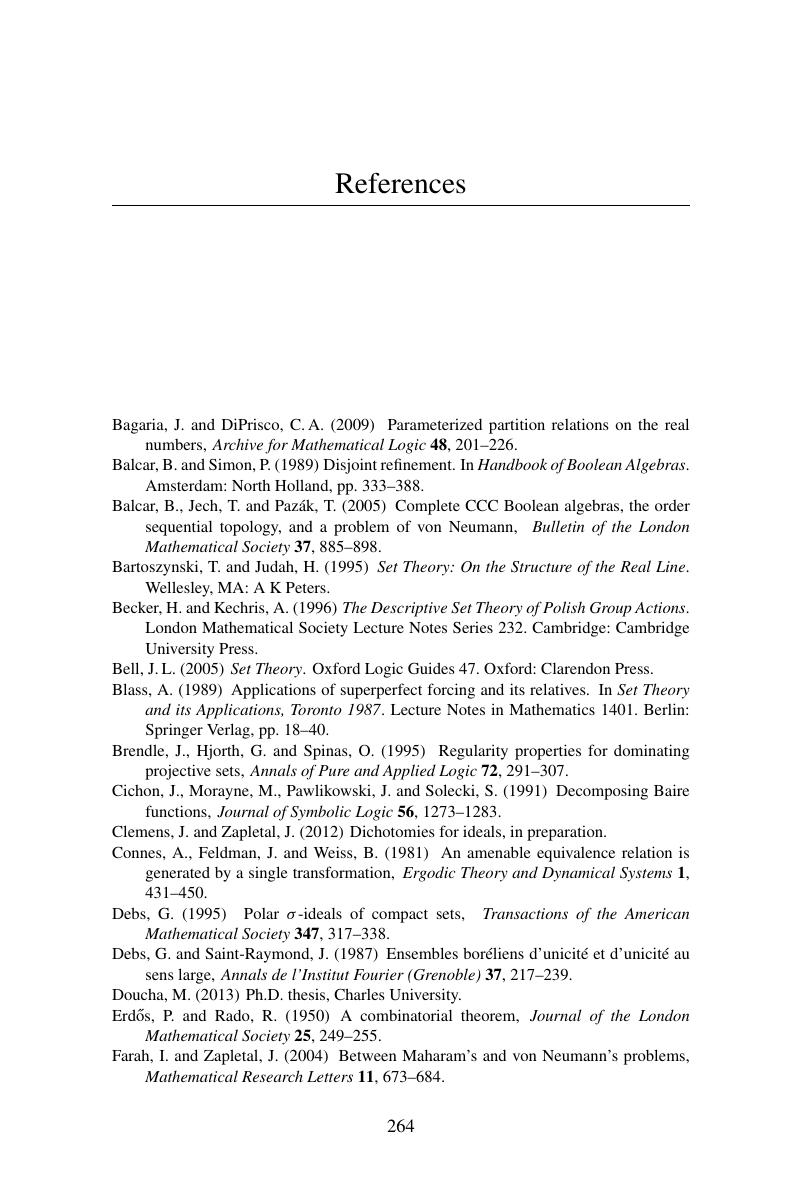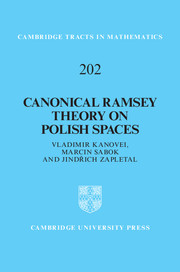Book contents
- Frontmatter
- Contents
- Preface
- 1 Introduction
- 2 Background facts
- 3 Analytic equivalence relations and models of set theory
- 4 Classes of equivalence relations
- 5 Games and the Silver property
- 6 The game ideals
- 7 Benchmark equivalence relations
- 8 Ramsey-type ideals
- 9 Product-type ideals
- 10 The countable support iteration ideals
- References
- Index
- References
References
Published online by Cambridge University Press: 18 December 2013
- Frontmatter
- Contents
- Preface
- 1 Introduction
- 2 Background facts
- 3 Analytic equivalence relations and models of set theory
- 4 Classes of equivalence relations
- 5 Games and the Silver property
- 6 The game ideals
- 7 Benchmark equivalence relations
- 8 Ramsey-type ideals
- 9 Product-type ideals
- 10 The countable support iteration ideals
- References
- Index
- References
Summary

Information
- Type
- Chapter
- Information
- Canonical Ramsey Theory on Polish Spaces , pp. 264 - 267Publisher: Cambridge University PressPrint publication year: 2013
